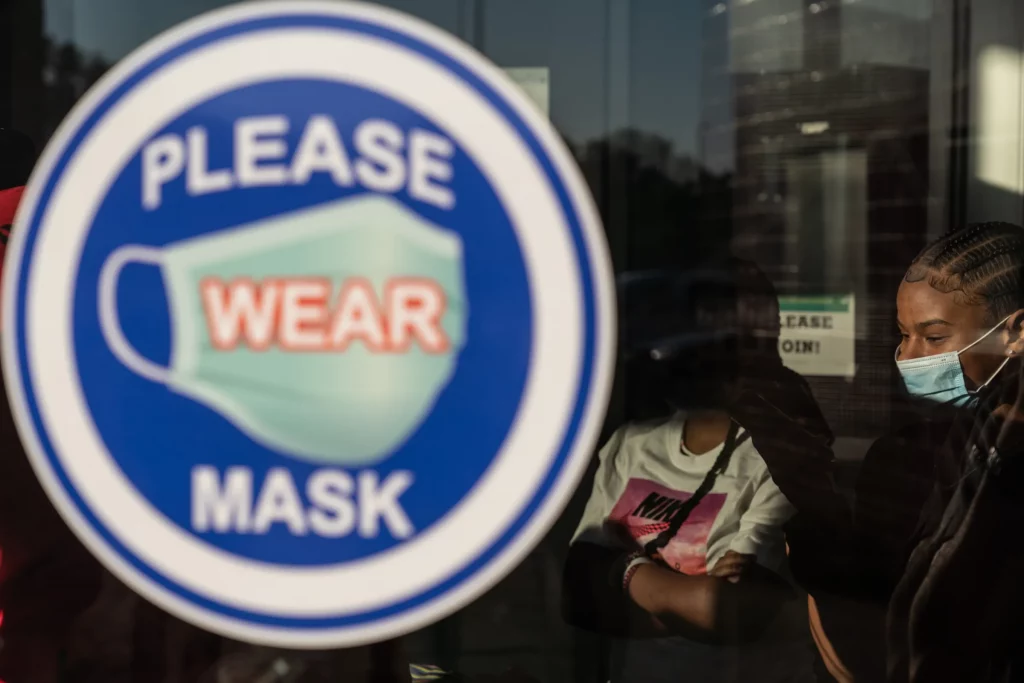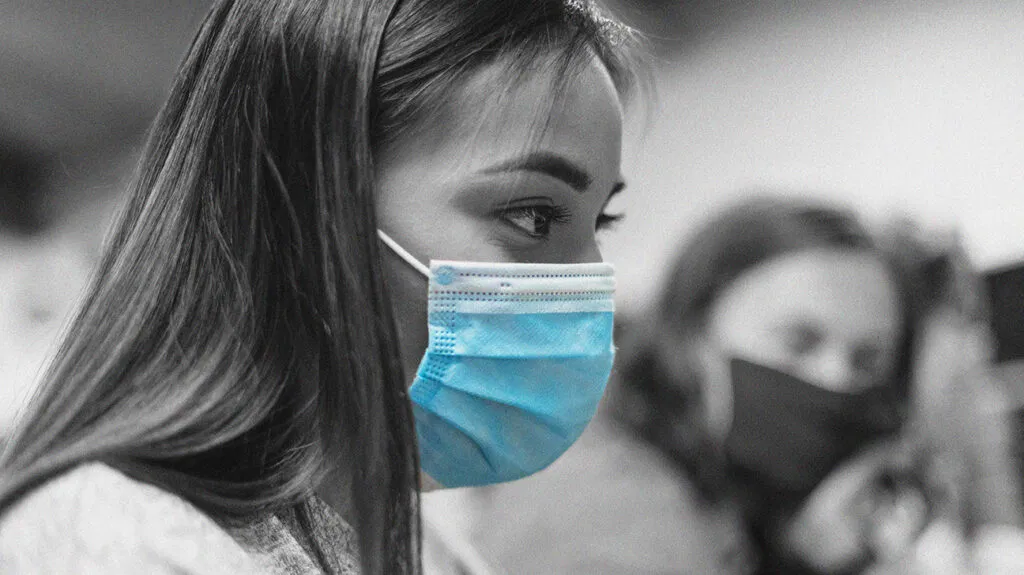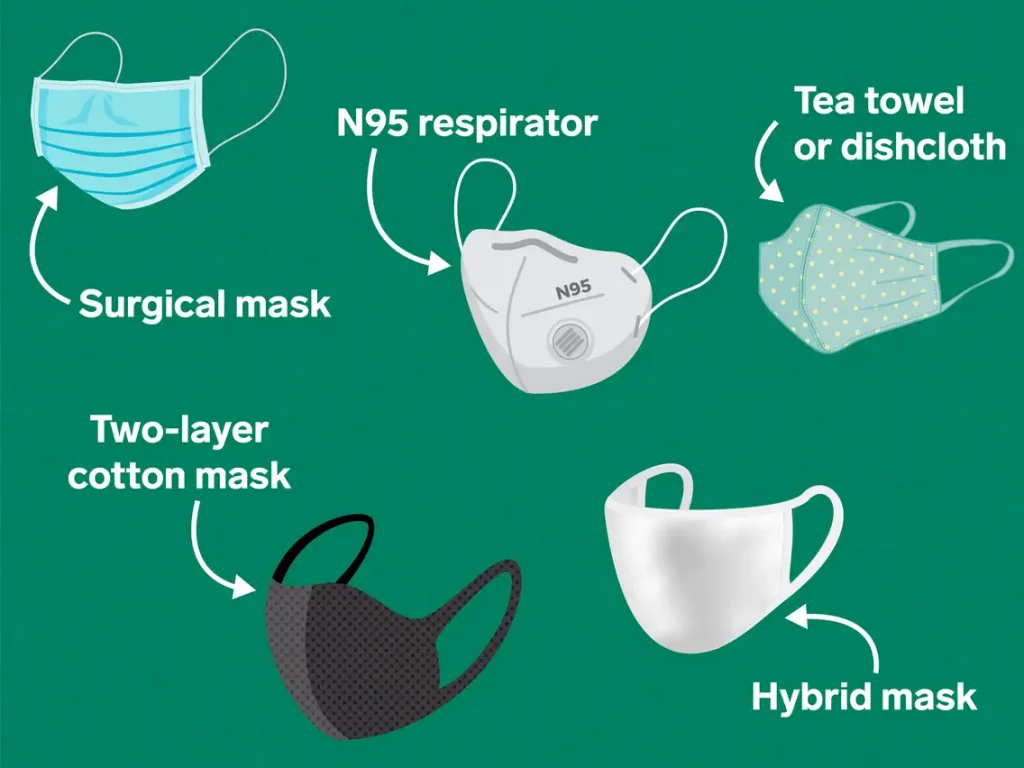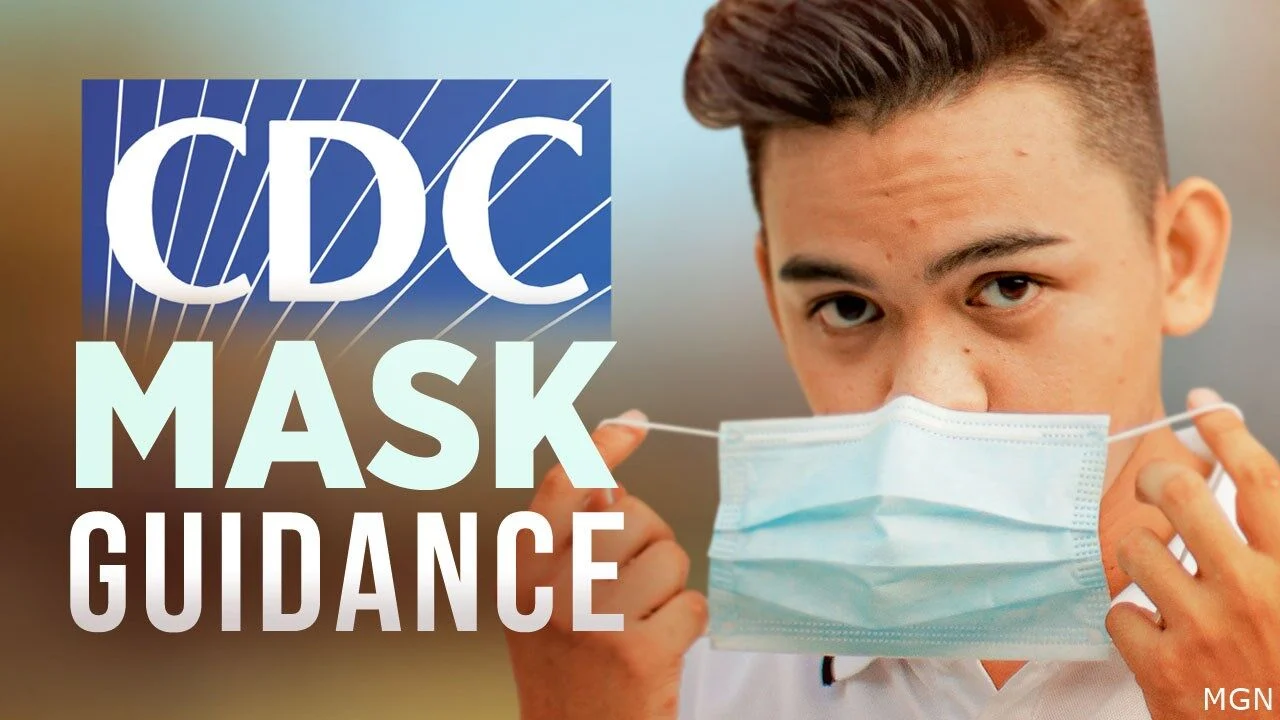
CDC Mask Guidelines – To prevent the transmission of COVID-19, the Centers for Disease Control and Prevention (CDC) and the Minnesota Department of Health (MDH) suggest that persons use a well-fitting mask in certain places and situations. Other federal, state, or municipal laws may impose mask requirements, and corporations may impose their own. This article includes advice on CDC Mask Guidelines on when to wear a mask, and which kinds of masks are the most effective.
COVID-19 is considered to be transferred mostly by respiratory droplets and tiny particles that are emitted when individuals breathe, talk, cough, or sneeze. COVID-19 can be prevented by wearing a well-fitting mask.
When is it appropriate to Wear a Mask?

COVID-19 community levels are used by the CDC to categorize every county in the United States into low, medium, or high-risk categories. COVID-19 instances, new hospital admissions, and hospitalizations are used to determine these values.
Visit CDC:
COVID-19 by County to see if your county is classified as low, medium, or high. Every week, the CDC will update the community levels. The Centers for Disease Control and Preventative (CDC) suggests various prevention methods for each level.
- Wear a mask in public indoor settings, including K-12 schools and other indoor community settings, regardless of vaccination status, if you live in an area with a high COVID-19 community level.
- Regardless of the COVID-19 community level in your region, if you are immune-compromised or at high risk of serious sickness from COVID-19, talk to your doctor about whether you need to wear a mask. If you reside in a COVID-19 Community Level of medium or high, you may need to take extra measures. Avoid non-essential indoor activities in public where you can be exposed if the community level rises.
- In indoor public transit situations, the CDC recommends that individuals wear masks.
- Even if people around you are not wearing masks or the COVID-19 Community Level in your region is low, you may opt to wear a mask at any moment based on your own desire.
- It’s essential to stay at home and away from people if you’re unwell or test positive. Wear a mask if you have to go out (for example, to a doctor’s visit). For information on keeping at home and away from people if you are sick or test positive, see If You Are Sick or Test Positive (isolation). Wear a mask for ten days while you’re among other people, even if you’re at home.
- If you’ve been exposed to COVID-19, follow the guidelines for COVID-19 testing and avoiding close contact.
- If you haven’t been vaccinated or haven’t had all of your COVID-19 shots, stay at home and away from others (quarantine) and wear a mask if others are around.
- If you have had all prescribed COVID-19 vaccine doses, including a booster when due, or if you have had COVID-19 in the previous three months, you should wear a mask for 10 days after exposure.
Masks may be required by law in Several Circumstances

Regardless of the COVID-19 Community Level, certain locations may have unique federal, state, municipal, or business-level regulations to wear masks.
- Under federal, state, and/or municipal legislation, mask regulations may apply to health care settings, including long-term care.
- Local governments (such as a city, town, or county) have the authority to create mask regulations, which must be obeyed.
- Businesses and corporations can also establish their own mask policies, which employees and customers may be legally obligated to observe.
Types of Masks

To help protect against COVID-19, including variations like Omicron, MDH suggests using a high-quality mask. N95 or KN95 masks, which are excellent at blocking droplets, are examples of high-quality masks. In addition, surgical masks offer better protection than fabric masks.
- Wear a mask with two or more layers of tightly woven cloth if you don’t have this sort of mask. To maximize efficacy, place a disposable mask under a cotton mask. The disposable mask’s edges should be pressed securely against your face by the cloth mask.
- If you are immune-compromised or at high risk of being very ill with COVID-19, using a good-quality mask is even more vital.
- Face covers consisting of thinner, loosely woven materials should not be worn.
- Face coverings made of thinner, loosely woven, or single-layer fabric, such as scarves, neck gaiters, or scarfs, should not be used. They’re not as good at preventing particles from escaping when speaking, coughing, or sneezing. Wear a mask underneath if you’re wearing a scarf or neck gaiter for warmth.
- Mesh masks, masks with apertures, holes, obvious flaws in the design or material, or masks with vents are NOT suitable face coverings because they allow droplets to escape from the mask.
- Look for nose wires in masks. They can aid to enhance fit and closing gaps or holes.
What is The Best Way to Put on a Mask?

- Before putting on your mask and after removing it, wash your hands.
- A mask should completely cover your nose and mouth and fit securely against your face, with no gaps. The mask should not be too tight or restricting to wear, and it should be pleasant to wear.
- Find a mask that is made for youngsters for children aged 2 and up to ensure optimum fit. A mask should not be worn by children under the age of two.
- If you wear glasses, look for a mask that fits snugly over your nose or includes a nose wire to prevent fogging.
- When wearing the mask, avoid touching it. It does not fit you correctly if you have to touch or adjust your mask frequently.
- If you use a cotton mask, make sure to wash it after each use.
- If you’re going to reuse a N95 or KN95, keep it in a paper bag. Between usages, do not wash a N95 or KN95. When it’s time to replace your mask, consult the directions that came with it.
- Wearing a mask that is unclean, moist, or torn is not recommended.
According to the Centers for Disease Control and Prevention (CDC) for the Disability Protections, Face masks are to be worn in this order.
Businesses and other Organizations Should be Aware of the Following:
- Certain impairments, behavioral requirements, or other health, mental health, or developmental disorders may make it difficult to securely use a mask or other facial covering.
- Wearing a mask is not recommended for people who have problems breathing, are unconscious, or are unable to remove it without assistance.
- A mask should not be worn by children under the age of two.
- Masks may be harmful in some settings (for example, swimming or other activities that may soak or immerse a face covering in water).
FAQs
Should I use a mask if my immune system is weak?
Your immune reaction to COVID-19 immunization may be weaker if you have a disease or are using drugs that impair your immune system. Check your county’s COVID-19 Community Level for advice on whether you should wear a mask and what else you can do to protect yourself against COVID-19. Keep in mind that you can use a mask at any moment depending on your comfort level and personal risk.
If I’ve been vaccinated, do I need to wear a mask and prevent close contact with others?
In most cases, if your COVID-19 immunizations are up to current, you won’t need to wear a mask outside.
Indoors, use a mask, and take all other steps you can to protect yourself against COVID-19.
